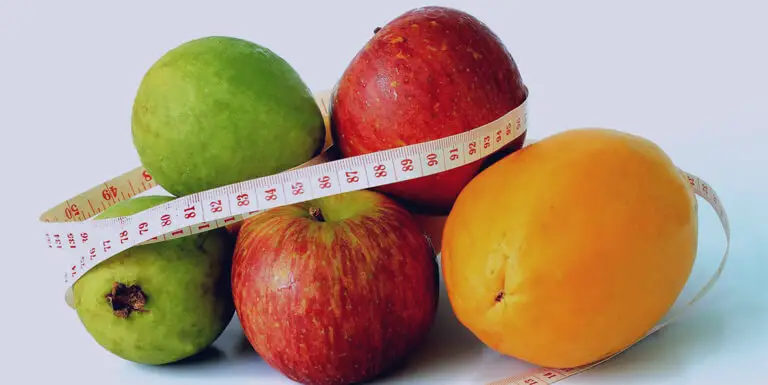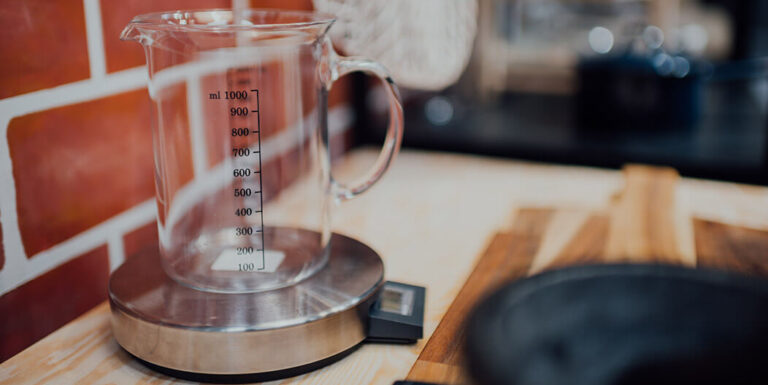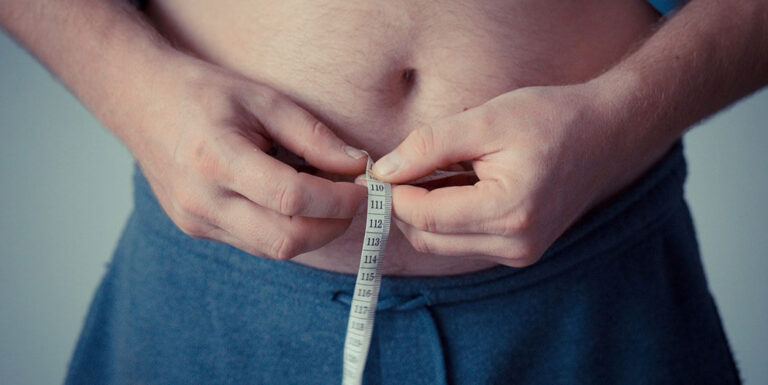Cutting Macro Calculator: Count Your Cutting Macros Like a Pro!
It’s not difficult to figure out how to lose fat. It takes some calculations to determine your macros for cutting and consistency when it comes to following the actual diet and training plan.
Knowing exactly how to calculate your macros for cutting, especially after bulking or before a mini-cut helps you lose body fat while minimizing potential muscle loss.
In this article, I will discuss how to calculate your macros for cutting step-by-step. Including examples, and tips to ensure cutting success.
Table of contents for easy navigation:
- Calculate Your Macros for Cutting
- Step 1. Calculate Your Daily Calorie Needs
- Step 2. Create Caloric Deficit
- Step 3. Estimate Your Protein Needs
- Step 4. Choose Your Daily Fat Needs
- Step 5. Determine Your Carbohydrate Needs
- Step 6. Follow Your New Cutting Macros
- Tips on Cutting Macros
Calculate Your Macros for Cutting
Don’t have time to learn exactly how to calculate your macros for cutting?
Use the cutting macro calculator below to identify your protein, carbohydrate, fat as well as total calorie needs in seconds!
Although if you fancy learning the step-by-step process to determine your macros for your cutting diet – keep on reading!
Step 1. Calculate Your Daily Calorie Needs
Identifying how many calories you burn daily is always the first step when setting up macros for cutting, lean bulking or maintaining weight.
You can estimate how many calories you burn daily, or your Total Daily Energy Expenditure (TDEE), using a TDEE calculator. The calculator considers your individual factors like gender, age, weight, height and activity level to provide a fairly accurate estimate.
Another way of estimating your TDEE is by tracking your food intake, regularly weighing yourself and keeping track of weigh-in results.
Get a digital scale and track your calories intake accurately, using a calorie tracking app for about two weeks while weighing yourself regularly.
If you notice that the weight is dropping, you are eating below your TDEE. If you are gaining weight, you are eating above your TDEE. And, if your weight stays about the same, then you are eating at around your TDEE level.
Step 2. Create Caloric Deficit
Next, you want to decrease the number of calories you burn daily by about 20-25% to create a calorie deficit.
This should make you lose weight steadily, at a recommended rate of 0.5-1 kg per week (1-2 lb/week).
Such a weight-loss rate would minimize the risk of losing muscle mass while cutting.
For example, a person who weighs 70 kg/155 lb and burns 2500 calories daily would need to consume 2000 calories daily.
Step 3. Estimate Your Protein Needs
Sufficient protein intake plays a huge role when cutting.
Research shows that higher protein intake is much superior to lower protein intake, specifically in terms of muscle retention when cutting calories.
Other reasons why research supports higher protein diets are:
- Increased satiety
- Increased thermogenesis (more calories burned processing protein)
- Improved body weight management
A systematic review suggests that most people that are into resistance training should consume between 2.3 – 3.1 grams per kilogram of lean body mass or 2.3 grams of protein per kilogram of body weight. That’s about 1 gram per pound of body weight.
For example, a person who weighs 70 kg/155 lb could consume around 160 grams of protein.
Another way of determining your protein intake needs is simply dedicating about 30% of your daily calorie intake to protein.
That’s exactly how it’s done in the cutting macro calculator above.
Following this technique, the same person who weighs 70 kg/155 lb and as we have identified previously would need to consume 2000 calories to lose fat, would need to consume 150 grams of protein.
So, take the new daily calorie intake you calculated and multiply it by 0.3
2000 calories X 0.3 = 600
The result is the number of calories that should be dedicated to protein.
Then divide that number by 4, because 1 gram of protein contains 4 calories.
600 / 4 = 150
That’s your approximate daily protein target.
Step 4. Determine Your Daily Fat Needs
You might remember that back in the day, people looking to lose fat were typically eating a diet very low in fats, but this isn’t necessary.
The truth is that as long as you are in a calorie deficit, eating fat won’t make you fat.
As a matter of fact, dietary fat is essential for health and is responsible for proper hormone production.
Furthermore, eating a sufficient amount of fats from quality sources may help you:
- Improve brain function
- Be in a better mood
- Increase the level of satiety
When cutting calories, research suggests that 15 – 30% of your total calorie intake should come from fats.
For example, keeping in mind that 1 gram of fat contains 9 calories, a person consuming 2000 calories could eat somewhere between 33 – 67 grams of fats:
- 33 grams of fats, if 15% of the total calorie needs are allocated to fats
- 45 grams of fats, if 20% of the total calorie needs are allocated to fats
- 56 grams of fats, if 25% of the total calorie needs are allocated to fats
- 67 grams of fats, if 30% of the total calorie needs are allocated to fats
I personally try to consume at least 45 grams of fats per day, when my cutting calories are very low.
Also, I would not recommend you to consume more than 30% of your total daily calories from fats. Mostly because fats don’t provide much additional benefit when the minimum requirement is met, and are very calorically dense.
Step 5. Determine Your Carbohydrate Needs
Lastly, the remainder of the calories should come from carbohydrates.
Research shows that carbohydrates can help you recover faster and improve performance in the gym.
To identify how many carbs you can have, deduct the remainder of your daily calories, and divide it by 4.
Using the numbers from the previous examples a 155 lb or 70 kg person on a 2000 kcal cutting diet would consume 150 grams of protein (600 kcal) and 45 grams of fat (400 kcal). The remaining 1000 calories would come from 250 grams of carbs.
Worth noting that the ratios between fats and carbohydrates can be interchanged, depending on your personal preferences.
Just makes sure you consume at least the minimum requirements for dietary fats.
Step 6. Follow Your New Cutting Macros
Knowing your macros for cutting is just the starting point.
After you have calculated your macros for cutting, you need to make a diet plan that fits those macros. You can use my free macro meal planning template to create a personalized diet plan that fits your specific macro goals.
Alternatively, you can choose to follow a more flexible approach like the “If It Fits Your Macros” (IIFYM) dieting approach. It is a type of dieting where you focus on macronutrients – protein, carbs, and fats.
This allows you to be more flexible with the food choices as long as they fit into your daily macros targets. Just make sure to always measure and track your food intake instead of “guesstimating”.
I also recommend you get my macronutrient cheat sheet for a quick way to decide what you should eat depending on which macros you need.
If you find it challenging to hit both calories and macros consistently then feel free check out the article on why you are hitting calories but not macros and how to fix it.
Tips on Cutting Macros
Here are few helpful things to keep in mind to ensure a successful cutting phase after you have calculated your macros.
Be Consistent
Like with many things in life, especially when building your physic – don’t expect to see drastic changes in a week or two.
It’s important that you stay consistent and stick to the cutting macros that you calculated for at least three weeks before making any adjustments.
As I mentioned previously you want to aim for a weight-loss rate of 0.5-1 kg per week (1-2 lb/week).
If that’s is the case – perfect!
You just need to keep on following the plan and sooner or later you will see noticeable changes.
Be Ready to Adjust Macros Over Time
After a while, your rate of weight loss will slow down.
This is completely normal.
Your bodyweight decreases and you require a lower calorie intake to maintain your current weight in comparison to when you calculated you cutting macros at the start.
So, if you are losing less than 0.5-1 kg per week (1-2 lb/week), then you can either decrease your calories and/or increase daily calorie expenditure through cardio.
Decrease your calorie intake by 100-200 calories or adding an additional 20-30 minutes of cardio (depending on the type of cardio). These adjustments should put you back into a calorie deficit allowing you to continue to lose weight at a steady rate.
Follow the Right Workout Program
When following a cutting diet, it’s recommended to do resistance type of training.
It can mitigate muscle loss when cutting calories.
Furthermore, you should still apply the concept of progressive overload. In other words, try to progress from workout to workout, as it can help you gain strength and muscle mass, even when dieting.
Consider using my free Google Sheets workout template to build your own workout routine and then track your progress over time including sets, reps, weight and total volume.
Track Calories and Macros
It’s very important that you measure your food and track the calorie and macro intake correctly.
For tracking your food intake, I usually suggest using some sort of tracking app like MyFitnessPal or my free calorie tracking spreadsheet.
Take Progress Pictures
A great way to track your progress from the work you put in dieting and training in the gym is by taking progress pictures.
The numbers on your bodyweight scale don’t lie, but it also doesn’t tell the entire through whether you are making progress or not.
For example, when the numbers on the scale are not moving in the right direction, you might think that you reached a weight loss plateau. However, it can also be that you have built more while losing fat at the same time. The only way you would tell it’s the case is by taking regular progress pictures.
At the start of your cutting phase, take a few pictures from the front, back and side.
Continue to do so once a month to see how you are progressing.
Remember to make progress pictures in the same conditions every time – same room, same lighting, same poses, etc.
Take Body Measurements
Another good way to determine if your cutting diet works is to take the body measurements including the level of body fat, if possible.
You can take measurements of your:
- Arm size
- Chest size
- Calf size
- Waist size
- Thigh size
- Neck size
You can simply use these measurements to track whether the circumference of a specific area is becoming smaller. This will usually indicate that you are losing fat.
You can also use these body measurements can help you estimate your body fat percentage. Or you can use specific callipers to pinch your skin in certain areas, and then calculate the percentage of body fat.
Final Thoughts
I hope this article answered your question regarding how to calculate macros for cutting.
Keep in mind that cutting macros are different for every individual. What works for some might not work for another. So, you will have to calculate your personal cutting macros and keep adjusting them as your body fat keeps going down.
Cutting takes time, especially if you start with a high body fat percentage. So, make sure to follow the steps mentioned in the article, and stay consistent.
Sooner or later, you will start seeing noticeable changes which will help you stay motivated and achieve your fitness goals.
![Maingaining: Everything You Should Know [A Step-by-Step Guide]](https://gfitnessonline.com/wp-content/uploads/2022/04/man-lean-muscle.jpg)





